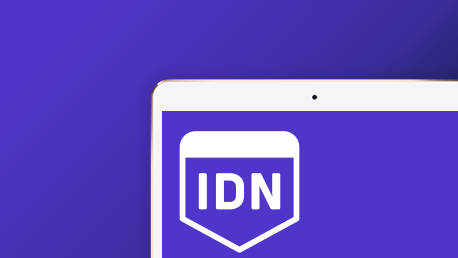In an earlier Perspectives piece, I addressed the macroeconomic conditions that are impacting the insurance industry and how artificial intelligence can help address them. In that blog, we touched upon the idea that delivering an exceptional customer experience is one of the best ways to stabilize an insurer’s book of business.
Simply put, disgruntled customers churn and happy policyholders renew. And, those happy customers may even expand their relationship by adding new drivers, insuring different cars or other motorized vehicles, or taking out homeowners or renters insurance. The value of treating customers well, especially in times of stress - which if we are being honest is when most policyholders interact with their insurance company - cannot be understated.
Here, we explore the role artificial intelligence can play in helping insurers deliver exceptional policyholder experiences. Using AI to help build a loyal customer base through the fast, accurate, and fair settlement of claims is just one of the ways insurers can ensure long term success.
Highly Competitive yet Mildly Differentiated
One of the most interesting things about the insurance industry is that the services offered among the various players in the space are not significantly differentiated. Granted, there are certainly some nuances, but the general principle of insurance is universal. The policyholders pay a monthly premium which purchases protection in the form of monetary recompense in the event of an accident.
On top of this, the insurance industry is exceptionally competitive. Potential policyholders have what can feel like a limitless number of options when it comes to carriers - from national brands to insurers doing business in a single state or region. And because insurance is such a highly regulated industry, competing on price is typically a non-starter. Limits set by regulators make it difficult to use premium increases to offset the rising cost of doing business.
At the same time, it is very unlikely that in an effort to win customers insurers will begin a “race to the bottom” when it comes to prices. And finally, we know that customer satisfaction is a key indicator leading to retention, which is not good news for carriers when the industry is reporting that policyholders are on average 20 percent less satisfied with their carriers than they were prior to the pandemic.
Keeping it Personal
Retaining existing policyholders is known to be good practice. Business schools around the world teach that it costs more to win a new customer than to keep a current one. Furthermore, industry experts believe that a best-in-class claims experience can generate up to 4X growth and 30 percent greater profitability. And that is only one of the many processes and interactions shaping the customer’s perception of the insurer.
Every customer touchpoint, from application/point of sale, through to renewal, affords an opportunity to provide a highly personalized experience that makes the customer feel appreciated and more likely to want to keep doing business with their now preferred provider.
You Never get a Second Chance to Make a First Impression
Like most business-to-consumer organizations, insurance has not been immune to the customer demand for the instant gratification of “one-click” commerce. Potential policyholders want to purchase insurance in much the same way they purchase other consumer goods, even when they know that fundamentally insurance coverage is different. To their benefit, insurance carriers have made tremendous strides in providing an omnichannel experience for their customers that enables multiple self-service options when it comes to purchasing a policy.
But insurance is all about acceptable risk. So even if a customer applies through an app on their phone, an experienced professional needs to evaluate the application to understand the potential risk associated and determine the next best course of action. This can be a time-consuming activity with perceived delays potentially driving the customer to work with a different carrier. The good news is that the approaches that carriers have begun taking to mitigate underwriting risk using artificial intelligence (AI) can, and should be used to expedite the process for legitimate applicants, creating the first in a series of exceptional customer touchpoints.
With AI in place to review each application, a potential customer who applied via the app and whose information gets a clean bill of health could receive an instant message that everything looked good and they should receive a quote within the next business day. Not only is the carrier mitigating risk by getting a sense of which applications and applicants may be risky, but also setting themselves up for success by creating and managing expectations for customers with whom they want to do business.
When Something Goes Wrong
Insurers and insured alike would hope that claims do not get filed, yet we all know that is not going to happen. Since claims are inevitable, it is in the insurer’s best interest to settle claims as quickly, accurately, and fairly as possible, especially in inflationary periods when the cost of making the policyholder whole can increase dramatically the longer it takes to settle a claim. At the same time, it is critically important to remember that the claims process can make or break how a policyholder feels about their carrier.
AI can be tremendously helpful in eliminating friction from the claims process and delivering a phenomenal policyholder experience. This is due in many cases to the fact that AI can influence the entire process, from first notice of loss (FNOL) to settlement, and at major touchpoints throughout. Optical Character Recognition/Natural Language Processing (OCR/NLP) can be used to analyze claims and supporting documentation (correspondence, adjuster notes, medical bill estimates, etc.) to determine in real-time if anything is missing, if the claim can be assigned for straight-through processing, if a claims handler needs to get involved and why, or if a third-party may be responsible for all or part of the claim, just to name a few.
AI can also be used to automate and enhance customer interactions and keep the policyholder informed (which makes them feel respected), as well as expedite repair and payment. These are the cornerstones of what keeps a customer a current customer versus a former customer.
A Seamless Renewal
One of the most exciting things about the use of AI in insurance is the portrait it can paint of the policyholder. For example, data analysis can be used to create customer behavior patterns based on usage that enable insurers to offer highly personalized policies at renewal. This approach may also create opportunities to offer new services or coverage. AI can also support strategies that predict customer churn, empowering carriers to offer policy recommendations that better align with customer needs. This level of information can be incredibly beneficial for the insurer at renewal and help make the customer feel appreciated.
Seeing Customer Loyalty in a Competitive Insurance Market: Keep Your Customers Happy with the Right Technology
As the old saying goes, “A bird in the hand is worth two in the bush,” and it is clear that applies to the insurance world as well. A loyal customer is hard-earned. But loyalty only goes so far, especially in a highly competitive market. The key to keeping customers is keeping them happy. A task that becomes much easier when you apply the right technology to the task.
For more information about how Shift can help you adopt AI to meet the economic challenges facing the insurance industry – contact us today.


